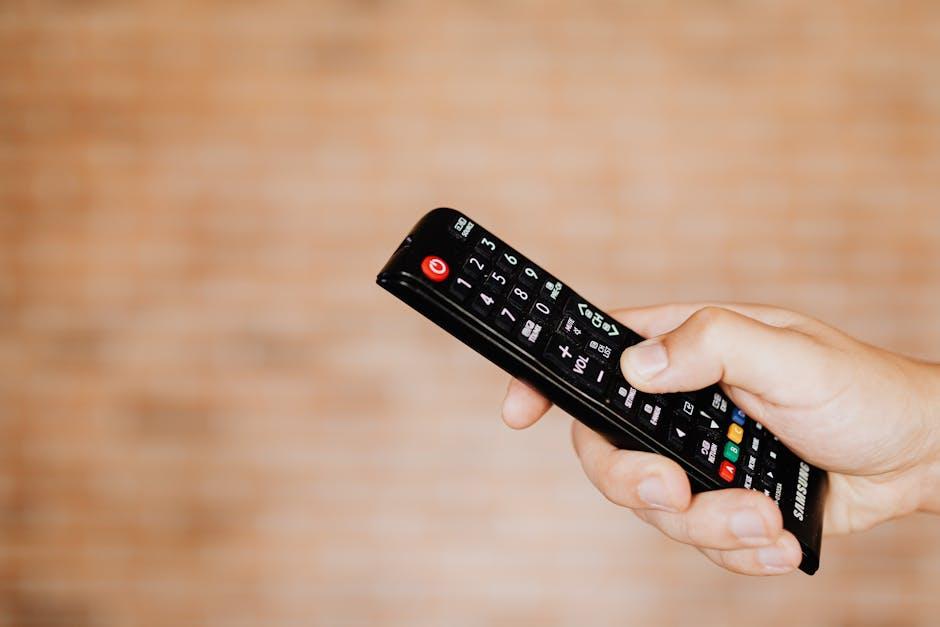In a world increasingly defined by seamless interaction and intuitive technology, the way we communicate with our devices is on the cusp of a revolutionary shift. Imagine controlling your smartphone, computer, or even household appliances not by tapping screens or clicking buttons, but by simply waving your hand, tracing a motion in the air, or making a subtle gesture. Gesture control, once the province of science fiction, is rapidly emerging as the next frontier in human-computer interfaces. This silent language of movement promises to transform our digital experiences, making technology feel less like a tool and more like an extension of ourselves. As we step into this new era, exploring the potential and challenges of gesture-based interaction reveals not only how we might control machines but also how we redefine the very nature of communication itself.
Understanding the Evolution and Potential of Gesture Control Technology

The journey of gesture control technology traces back to the earliest experiments with human-computer interaction, where touch screens and voice commands began to reshape how we engage with devices. Today, gesture control transcends simple motion detection by integrating advanced sensors, machine learning, and AI-driven pattern recognition. This evolution has fueled a new form of interaction that blends the physical with the digital, enabling users to navigate and manipulate virtual environments with intuitive hand movements. As hardware becomes more compact and affordable, and algorithms grow increasingly sophisticated, gesture control systems are moving from niche applications into mainstream use.
Several factors underpin the growing potential of gesture control technology:
- Enhanced Accessibility: Providing alternative ways to interact with technology for users with disabilities.
- Immersive User Experiences: Enabling more natural and immersive interactions in AR, VR, and gaming.
- Touchless Interfaces: Crucial in health-conscious environments to reduce surface contact.
- Cross-Industry Adoption: Expanding from consumer gadgets to automotive, smart homes, and industrial control systems.
| Era | Milestone | Impact |
|---|---|---|
| 1960s | Early Motion Sensors | Foundation for gesture recognition |
| 2000s | Rise of Touchscreens | Popularized direct interaction with devices |
| 2010s | AI-powered Gesture Recognition | Enabled complex, real-time interaction |
| 2020s | Integration with AR/VR | Created immersive, natural interfaces |
Key Challenges and Opportunities in Adopting Gesture-Based Interfaces

Adopting gesture-based interfaces presents a fascinating array of challenges that developers and designers must navigate to create intuitive and reliable user experiences. One significant hurdle is accurately interpreting diverse human gestures across various environments-lighting conditions, background noise, and user positioning can all affect sensor responsiveness. Additionally, cultural differences in gesture meaning complicate the creation of universal controls. Another concern lies in accessibility; ensuring gesture control serves users of all abilities demands innovative solutions to avoid exclusion. Moreover, privacy considerations arise as sensors and cameras capture sensitive motion data, requiring robust security measures to maintain user trust.
Despite these obstacles, the opportunities presented by gesture control are expansive and transformative. This technology promises to revolutionize how we interact with devices by offering touchless, hygienic, and highly natural user interfaces that bridge the physical and digital realms seamlessly. From smart homes and wearable gadgets to automotive dashboards and augmented reality, gesture recognition enables more immersive and efficient interactions. Consider the possibilities outlined in the table below:
| Sector | Potential Impact |
|---|---|
| Healthcare | Hands-free control during surgeries |
| Gaming | Enhanced immersive gameplay |
| Automotive | Safer driver interface navigation |
| Smart Home | Intuitive appliance control |
- Customization: Personalized gesture sets tuned to individual habits.
- Integration: Seamless multi-device connectivity for unified experiences.
- Feedback Mechanisms: Visual and haptic cues enhancing gesture recognition accuracy.
Designing Intuitive Gesture Experiences for Seamless User Interaction

Creating gesture-based interfaces demands a delicate balance between innovation and simplicity. Designers must prioritize natural motions that users can effortlessly replicate without frustration. This involves understanding human motor skills and cognitive load-recognizing that less is often more when it comes to gestures. For instance, combining intuitive swipes, taps, and pinches into a fluid vocabulary allows users to feel empowered rather than overwhelmed. Key considerations should focus on accessibility and cultural differences, ensuring gestures translate universally and accommodate diverse user needs.
To systematically approach gesture design, consider the following essentials:
- Consistency: Use gestures that follow platform conventions to build muscle memory.
- Feedback: Provide immediate visual, auditory, or haptic responses to confirm user actions.
- Discoverability: Make gestures easy to learn through onboarding hints or subtle UI cues.
- Error Tolerance: Design forgiving gestures that accommodate slight inaccuracies.
Below is a summary of common gesture types and their user implications:
| Gesture | Usage | User Impact |
|---|---|---|
| Swipe | Navigate between screens | Fast, intuitive navigation |
| Pinch | Zoom in/out on content | Precise control of detail level |
| Tap | Select or activate items | Simple and direct interaction |
| Hold | Trigger secondary options | Enables advanced commands |
Best Practices and Future Trends for Integrating Gesture Control in Everyday Devices

To seamlessly blend gesture control into our daily digital experiences, designers must prioritize intuitive interactions that minimize user learning curves. Simple, universal gestures that mimic natural human movements-such as swiping, pinching, or wave-based commands-should become the norm. Equally important is ensuring gesture recognition systems work reliably across various lighting conditions and user environments to avoid frustration. Incorporating adaptive algorithms that learn individual user habits can dramatically improve accuracy, creating a more personalized and effortless experience. Moreover, privacy considerations must be at the forefront, with data processing kept local whenever possible to protect sensitive biometric information.
Looking ahead, the fusion of gesture control with emerging technologies like augmented reality (AR), artificial intelligence (AI), and edge computing promises to revolutionize how everyday devices respond to human intent. Smart homes will transform, enabling users to manipulate appliances with a flick of the hand, while wearable devices could anticipate actions through micro-gestures detected in real-time. Below is a glimpse into projected trends highlighting this evolution:
| Trend | Description | Example Devices |
|---|---|---|
| Context-aware gestures | Device adapts gestures based on current activity | Smart glasses, AR headsets |
| Micro-gesture recognition | Small finger or wrist movements detected discreetly | Smartwatches, rings |
| Multi-modal input | Integration of voice, gesture, and touch | Phones, smart TVs |
In Summary
As we stand on the cusp of a new era in human-machine interaction, gesture control invites us to rethink the very way we communicate with technology. No longer confined to buttons, keyboards, or touchscreens, our movements could become the language of the digital world-intuitive, seamless, and profoundly human. While challenges remain, the promise of this next interface lies not just in efficiency, but in creating experiences that feel as natural as a simple wave or a subtle pinch. In embracing gesture control, we may find that the future of interaction is less about machines responding to commands, and more about technology moving in harmony with our own rhythm.











